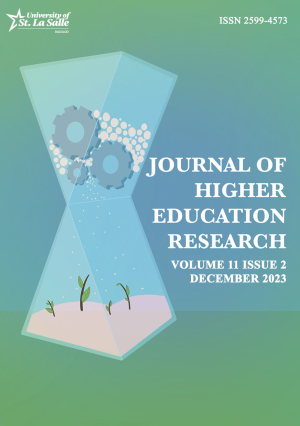Associated Factors of Death Anxiety Among Chinese Intensive Care Unit Nurses: A Multicenter Cross-Sectional Study
https://doi.org/10.70228/YJHER2024009
Cite this article Read this article
ABSTRACT
The intensive care unit (ICU) nurses often witness patients' death, which can trigger severe death anxiety, further affect the quality of nursing care, and prevent nurses' transition from their professional roles to daily life. Self-efficacy refers to individuals' self-confident views on their capabilities to deal with stressors and challenging encounters. Nurses may play personal and professional roles better with strong beliefs. This study utilized a quantitative descriptive-comparative and correlative design that determined the related socio-demographic factors of ICU nurses' death anxiety and the relationship between self-efficacy and death anxiety from 14 tertiary hospitals in Shenzhen, China, from June to July 2023. Out of 472 participants, 459 had been assessed and evaluated for their 10 demographic characteristics in terms of sex, age, marital status, religion, education, professional title, years of clinical work, having participated in the funeral of close relatives or friends within five years, and having suffered severe diseases, and death education. The findings revealed that the average death anxiety score among ICU nurses was 43.51 ± 10.15, and 81.7% of participants reported high levels of death anxiety. Furthermore, the self-efficacy score was 26.02 ± 5.98 and showed an almost intermediate level of self-efficacy. Multiple regression analysis showed that sex, death education, religion, age, and self-efficacy were significantly associated with death anxiety (p < 0.001). ICU nurses were at a disadvantage regarding self-efficacy and were more anxious about death. Consequently, the study highlighted the need for death education and targeted interventions to strengthen the self-efficacy of ICU nurses to lessen their death anxiety.
Keywords: death anxiety, self-efficacy, Intensive Care Unit (ICU) nurse, cross-sectional study

Volume 11 Issue 2, 2023 EDITION
Published 2023
Editor's Note
Dear Readers, We are pleased to present the Volume 11, Issue 2 (2023) of the Journal of Higher Education Research. This issue brings together a diverse collection of studies that address significant topics in education, healthcare, and well-being, showcasing research that is both relevant and impactful. This issue includes studies that highlight the importance of psychosocial factors in learning and practice. Cao and Espinosa examine how parenting styles influence study engagement among vocational nursing students, with self-compassion potentially mediating this relationship. Meanwhile, Yanling and Garcia shed light on the factors contributing to death anxiety among ICU nurses, emphasizing the need for tailored mental health interventions to strengthen the self-efficacy of ICU nurses. Similarly, Xing and Lachica highlight the growing demand for death education, pointing on the necessity of preparing nursing students for end-of-life care. From the perspective of patient care, Wang and Dolendo investigate how the fear of movement, or kinesiophobia, physical exercise and self-efficacy affect patients undergoing peritoneal dialysis, showcasing its impact on the quality of life of the patients. Chen and Cadena evaluate the effectiveness of a modified simulation tool to improve the skills of anesthesia nurses, emphasizing the value of hands-on training in healthcare. Mental health is another key theme in this issue. Li and Diva share the lived experiences of patients using nonpharmacological approaches to manage anxiety and depression related to chronic gastritis. This study proposes a model to assist the patients in developing appropriate behavioral adaptations and self-management skills and assess the effectiveness of strategies. Yang and Chua identify predictors of blood pressure in hypertensive patients, contributing to better hypertension management program. Lastly, two studies explore ways to enhance quality of life. Shen and Garcia investigate how square dancing improves sleep and well-being among middle-aged and older women, highlighting the importance of community-based physical activities. Song and Lachica report findings on the role of meaning in life and coping styles in supporting breast cancer patients undergoing chemotherapy. We are deeply grateful to our authors for their valuable contributions and to our reviewers for their time and expertise in refining this issue. A special thanks to the staff and Dr. Lota Largavista, Director of the Publication and Engagement Office, for their unwavering support in producing this volume. We hope you find this issue thought-provoking and useful in your professional practice and academic endeavors. Sincerely, JOVAL N. MARTINEZ Editor-in-Chief


